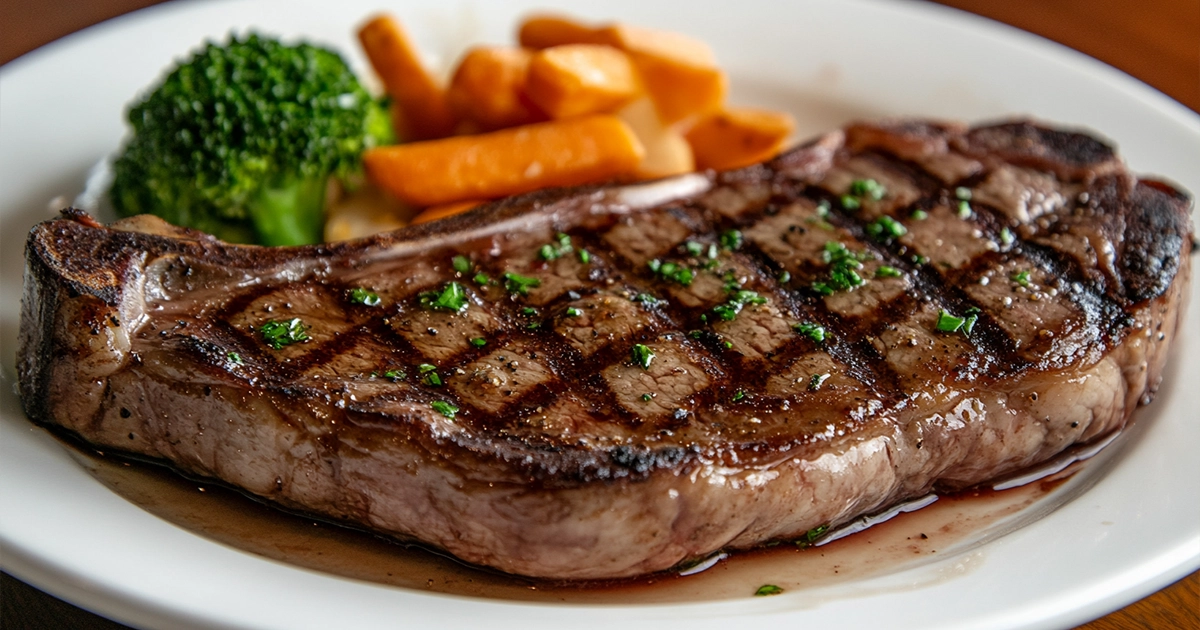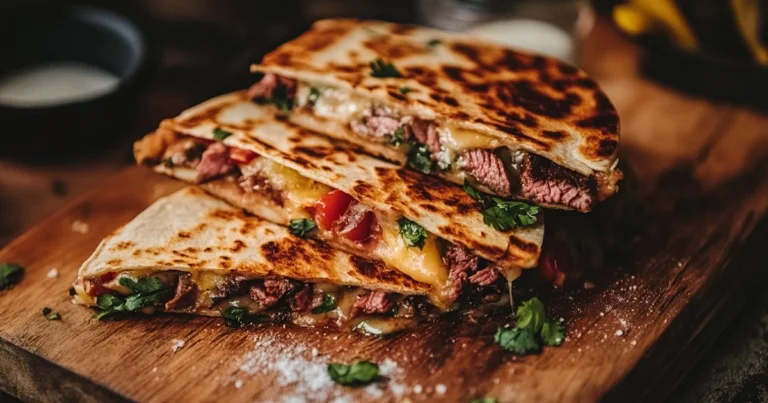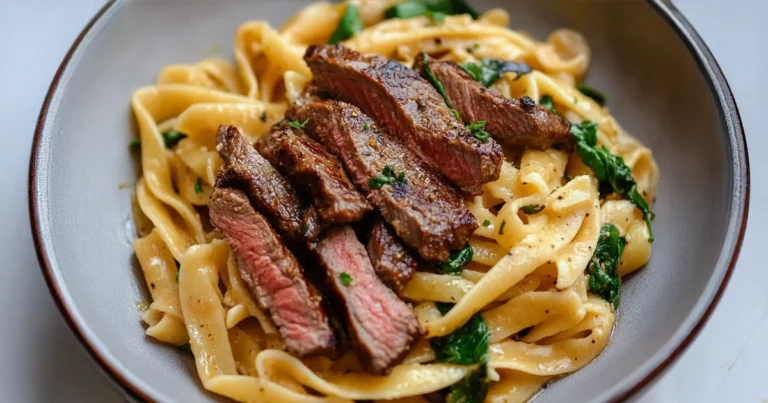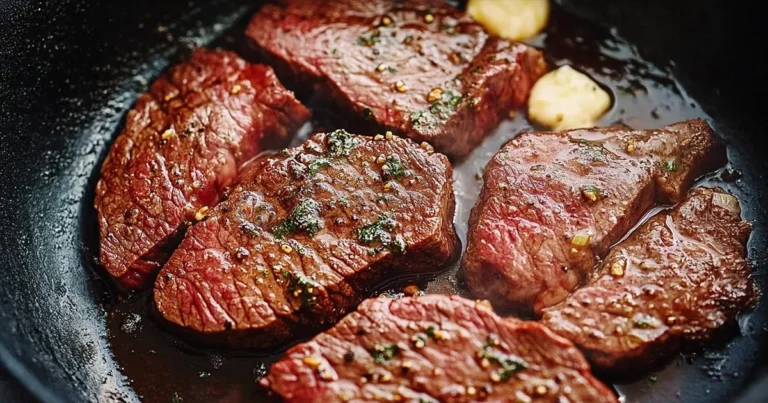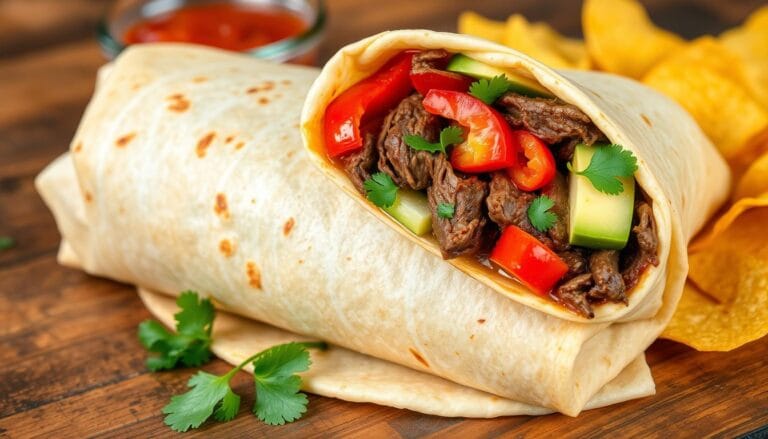Ribeye Steak Cooking Times
I remember my first time cooking a ribeye steak. The smell was amazing, but I was scared of messing it up. Learning the right cooking times and techniques changed everything. Now, I’m here to help you make perfect ribeye steaks every time.
Ribeye steaks are famous for their tender meat and rich flavor. Cooking them right is key to enjoying them at their best. We’ll cover cooking times, temperatures, and tips to make you a ribeye expert.
Get ready to wow your loved ones with delicious ribeye steaks. Let’s start this journey together and learn how to cook ribeye steaks perfectly.
Table of Contents
Understanding Ribeye Steak Selection
Choosing the right prime rib or ribeye steak is key for a great meal. Look for even marbling in the steak. This makes it tender and flavorful when cooked.
Marbling and Quality Grades
The USDA quality grade is important when picking a ribeye steak. USDA Prime beef has the most marbling, making it tender and flavorful. USDA Choice and USDA Select are also good, with Choice having more marbling than Select.
Choosing dry-aged or grass-fed Angus beef can make your steak even better.
Thickness and Weight Considerations
The thickness and weight of a ribeye steak matter. Look for steaks about 1 inch thick. This thickness helps get a nice sear and cooks the inside evenly.
Ribeyes usually weigh between 12 to 16 ounces. Larger cuts offer a more filling meal.
Bone-in vs Boneless Options
Ribeye steaks come in bone-in and boneless varieties. Bone-in cuts add flavor and moisture. Boneless steaks cook more evenly.
Understanding these factors helps you pick the best ribeye steak. This ensures a great cooking and dining experience.
Essential Equipment and Tools for Cooking Ribeye
Cooking the perfect ribeye steak requires the right tools. From grilling setups to cooking gadgets, we’ll cover the essentials. These items are key to mastering beef cuts preparation.
A heavy-bottomed skillet or cast iron pan is crucial. It ensures even heat for searing the steak. For grilling, a top-notch charcoal or gas grill is necessary.
- Wusthof 8-inch chef’s knife for precise cutting and trimming
- Finex cast iron skillet for even heat distribution and searing
- Jaccard meat tenderizer to enhance the flavor and texture of the steak
- Maverick’s Thermopen for accurate temperature monitoring
- Grape seed oil for its high smoke point during high-heat cooking
- Dalstrong boning knife for clean, effortless slicing
- John Boos walnut cutting board for a sturdy, functional workspace
- Under NY Sky chef apron for durability and protection during cooking
- Whetstone for maintaining sharp knives
- Good Cooking’s cooking stone for serving and keeping steak warm
- Cuisinart’s deluxe grill set for enhanced grilling technique
The right tools and equipment are vital for a great grilled or pan-seared ribeye steak experience. Invest in quality items to ensure your beef cuts are cooked perfectly every time.
Preparing Your Steak for Cooking
Before you can enjoy the juicy and flavorful ribeye steak, it’s essential to properly prepare it for cooking. The key steps involve bringing the steak to room temperature, seasoning it, and ensuring the surface is ready for searing.
Room Temperature Guidelines
To achieve even cooking, let your ribeye steak rest at room temperature for 30-40 minutes before cooking. This allows the steak to come closer to the desired internal temperature, resulting in a more consistent doneness throughout.
Seasoning Methods and Timing
Generously season your ribeye steak with salt and pepper, or use a specialized steak seasoning blend. Some chefs recommend seasoning the steak just before cooking, while others suggest seasoning it in advance and letting the flavors meld for a few hours or even overnight. For enhanced flavor, consider the dry brining method by salting the steak and refrigerating it uncovered for a few hours or up to 24 hours.
Surface Preparation Techniques
Before seasoning, be sure to pat the ribeye steak dry with paper towels. This helps create a better sear on the surface, as any excess moisture can inhibit the Maillard reaction responsible for the delicious browning and caramelization.
After seasoning, lightly coat the steak with a thin layer of oil. This helps the seasonings adhere to the surface and contributes to the overall searing process.
“The key to a perfect ribeye steak is in the preparation. Take the time to bring it to room temperature, season it well, and ensure the surface is dry for an optimal sear.”
Grilling Times and Temperatures
Grilling is a great way to cook a flavorful ribeye steak. To get the perfect sear and doneness, knowing the right grilling times and temperatures is key. These tips work for both charcoal and gas grills, helping you grill ribeye steak to perfection.
For charcoal grilling, start by searing the steaks over the hottest part of the grill for 1-2 minutes per side. Then, move them to the medium-heat section. Cook for 9-12 minutes for a 1-inch steak, or 12-15 minutes for a 1.5-inch steak. Turn them about 1 minute before the halfway point. This will give you a medium-rare steak with an internal temperature of 130-135°F.
On a gas grill, preheat it to high heat. Sear the steaks for 1-2 minutes per side, then lower the heat to medium. Continue grilling for 9-12 minutes for a 1-inch steak, or 12-15 minutes for a 1.5-inch steak. This will also give you a medium-rare steak with an internal temperature of 130-135°F.
The cooking times may vary based on your desired doneness. Use a meat thermometer to check the internal temperature. Remove the steaks from the grill when they reach your preferred doneness:
- Rare: 125-130°F
- Medium-rare: 130-135°F
- Medium: 135-145°F
- Medium-well: 150-160°F
- Well-done: 160°F and above
By following these grilling times and temperature guidelines, you can consistently achieve mouthwatering, perfectly cooked ribeye steaks. They are sure to impress your guests.
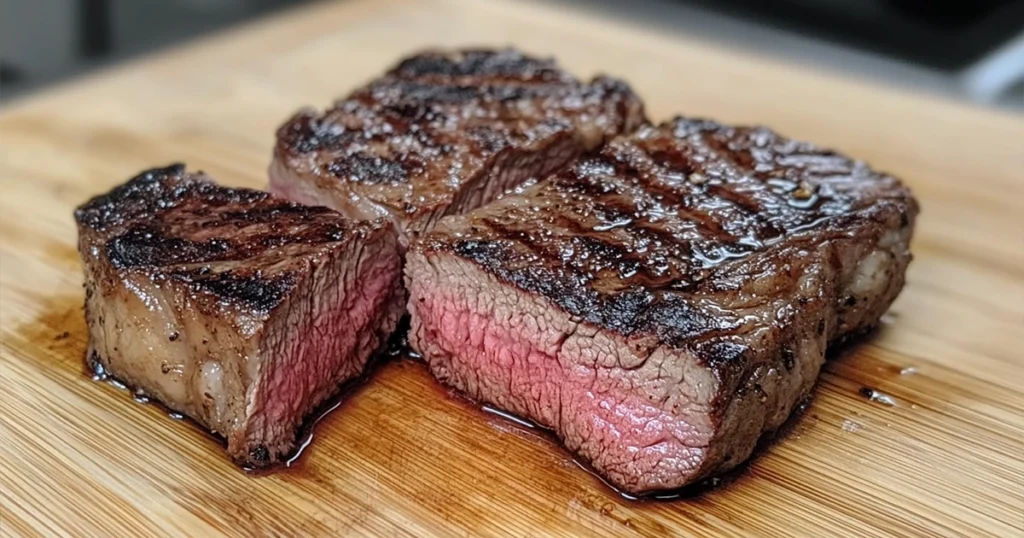
Pan-Searing Ribeye to Perfection
Getting the perfect pan-seared ribeye steak is an art. It needs precise temperature control and the right technique. By mastering pan-searing, you can bring out the full flavor and tenderness of your ribeye.
Heat Level Management
The secret to pan-searing a ribeye steak is keeping the right heat. Start by heating a heavy skillet or cast-iron pan over medium-high heat for about 5 minutes. This makes sure the pan is hot enough to sear the steak well, keeping it juicy inside.
Flipping and Basting Techniques
When pan-searing, don’t flip the steak too much. Flip it only once for an even sear. For more flavor, baste the steak with butter, garlic, and herbs during the last few minutes.
Timing for Different Doneness Levels
The cooking time for a pan-seared ribeye steak changes with the doneness level. For medium-rare, sear the steak for 12-14 minutes for a 1-inch thick cut, or 14-16 minutes for a 1.5-inch thick cut. Turn it about 1 minute before halfway. Use a meat thermometer to check the internal temperature, aiming for 130°F for medium-rare.
Mastering pan-searing can take your ribeye steak to new heights. With the right heat, flipping, and timing, you can make mouthwatering, pan-seared ribeye perfection at home.
Oven-Finished Method and Timing
If you love a perfectly cooked ribeye steak, try the oven-finished method. It gives you a great sear on the outside and a juicy inside. Here’s how to do it step by step and how long it takes.
Start by heating your oven to 400°F (200°C). While it warms up, dry your ribeye steak with paper towels. Then, sprinkle it with your favorite spices and herbs. Let the flavors mix for a few minutes.
Heat a heavy-duty skillet or cast-iron pan over high heat. Add some avocado or canola oil when it’s hot. Place the seasoned ribeye in the pan and sear for 2 minutes on each side. This will create a nice, caramelized crust.
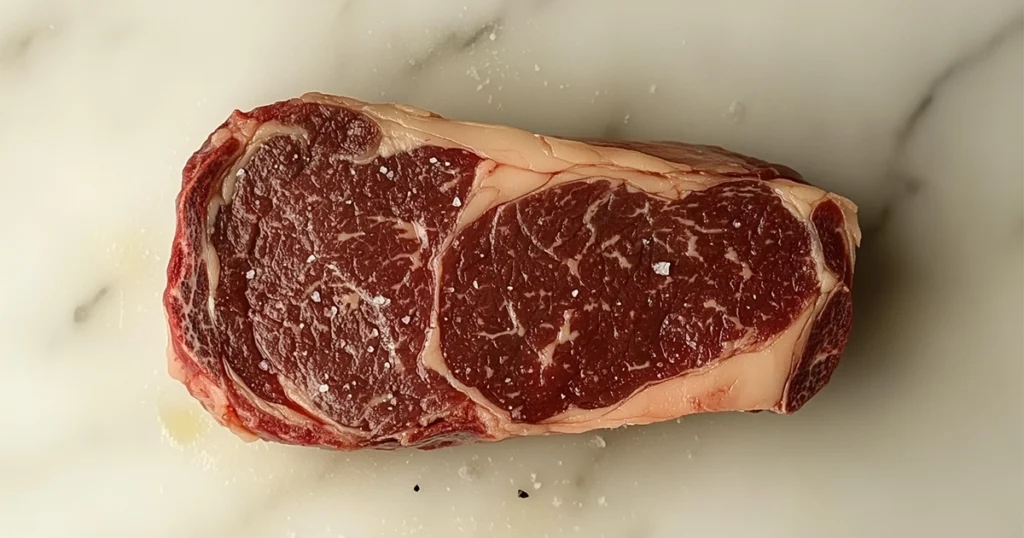
After searing, put the pan in the oven. Roast the ribeye for 11-14 minutes. The exact time depends on the steak’s thickness and how done you like it. For medium-rare, aim for 135°F (57°C). For medium, cook until it reaches 145°F (63°C).
The cooking time can change based on your steak’s size and thickness. Always use a meat thermometer to check the doneness. Once it’s cooked to your liking, take it out of the oven. Let it rest for 5-10 minutes before slicing. This makes the steak juicy and full of flavor.
Temperature Guide for Every Doneness Level
Getting the perfect doneness for your ribeye steak is key for a great meal. Whether you like it rare, medium-rare, or well-done, knowing the right internal temperatures is essential. A reliable meat thermometer helps you cook your ribeye steak just right.
Rare to Well-Done Guidelines
- Rare: 120°-125°F internal temperature
- Medium-Rare: 130°-135°F internal temperature
- Medium: 140°-145°F internal temperature
- Medium-Well: 150°-155°F internal temperature
- Well-Done: 160°-165°F internal temperature
It’s best to take the steak off the heat when it’s 5°F below your target. This way, it will keep cooking a bit during the resting time.
Using Meat Thermometers Effectively
Put the meat thermometer into the thickest part of the steak, away from fat or bone. For thin steaks, you might need to insert it from the side. Always clean the thermometer after each use to avoid contamination.
| Doneness Level | Internal Temperature Range |
|---|---|
| Black and Blue | 115°F and below |
| Rare | 120°-125°F |
| Medium-Rare | 130°-135°F |
| Medium | 140°-145°F |
| Medium-Well | 150°-155°F |
| Well-Done | 160°-165°F |
| Extra Well-Done | 170°F and above |
The USDA says your ribeye steak should be at least 145°F for safe eating.
Resting Times and Their Importance
Cooking the perfect ribeye steak requires a key step: the resting period. After grilling, pan-searing, or oven-frying, let your steak rest for 5-10 minutes before slicing.
During this time, the steak preparation continues. The juices spread evenly throughout the meat. So, when you cut into your ribeye steak, it stays juicy and flavorful.
The steak’s internal temperature will also rise a bit during rest. This is called “carryover cooking.” It can increase by about 5°F. So, take the steak off the heat a bit before it reaches your desired doneness.
“Resting a steak contributes to enhanced flavors by containing the juices and ensuring maximum flavor.”
For reverse-seared steaks, resting time is a bit shorter. This is because low-heat cooking doesn’t lose as much moisture as high-heat methods.
Using foil to cover the steak during rest helps keep its temperature steady. This is crucial for thicker ribeye steak cuts.
For a perfectly cooked and juicy ribeye steak, balance cooking time and resting. Letting your steak rest is key to a memorable meal.
Special Cooking Methods for Ribeye
Preparing the perfect ribeye steak is easier with specialized cooking techniques. Sous vide and reverse searing are two standout methods. They offer exceptional results for home cooks.
Sous vide cooking seals the ribeye in a plastic bag. It’s then submerged in a water bath at a precise temperature, usually 130°F for medium-rare. This method ensures even cooking, making the steak tender and juicy. After reaching the desired doneness, a quick sear in a hot pan or on the grill adds a caramelized crust.
The reverse sear method is different. It starts with slow cooking in a low-temperature oven, around 275°F, until it reaches about 115°F for medium-rare. Then, a final 1-minute sear on each side in a blazing hot skillet. This results in an evenly cooked, mouth-watering ribeye with a crisp exterior.
Choosing sous vide or reverse sear can elevate your ribeye steak experience. With practice, you’ll serve restaurant-quality ribeyes at home.
Common Cooking Time Mistakes to Avoid
Cooking the perfect ribeye steak at home is a joy. But, avoiding common mistakes is key. These errors can ruin the taste and texture of your steak.
Temperature Control Errors
One big mistake is cooking a cold ribeye steak right from the fridge. Make sure it’s at room temperature before cooking. Also, preheat your grill or skillet well. This helps cook the steak evenly and prevents it from sticking.
Timing Miscalculations
Don’t just rely on cooking times. Check the steak’s internal temperature too. The thickness and how well you like it cooked can change the time needed. Use a meat thermometer to get it just right.
Resting Period Issues
Don’t skip or shorten the resting time. This lets the juices spread evenly in the meat. Let your ribeye steak rest for 5-10 minutes before slicing. This also helps avoid overcooking due to carryover heat.
By avoiding these mistakes, you can make a delicious ribeye steak. Enjoy the tasty results you’ll get.
Conclusion
Learning to cook ribeye steak to perfection is a rewarding journey. It starts with choosing quality ribeye steaks. Then, using the right tools and techniques is key. Paying attention to cooking times and temperatures is crucial for a delicious meal at home.
Grilling, pan-searing, or oven-finishing are all great ways to cook a ribeye. The secret to success is in the details and being open to trying new things. By following the tips in this article, you can cook your steak to your liking. Whether you like it rare and juicy or well-done, you can achieve it.
Mastering ribeye steak cooking is a journey that never ends. With each try, you get better and appreciate this special cut of beef more. Enjoy the process, try different methods, and relish the tasty results of your efforts. Bon appétit!

